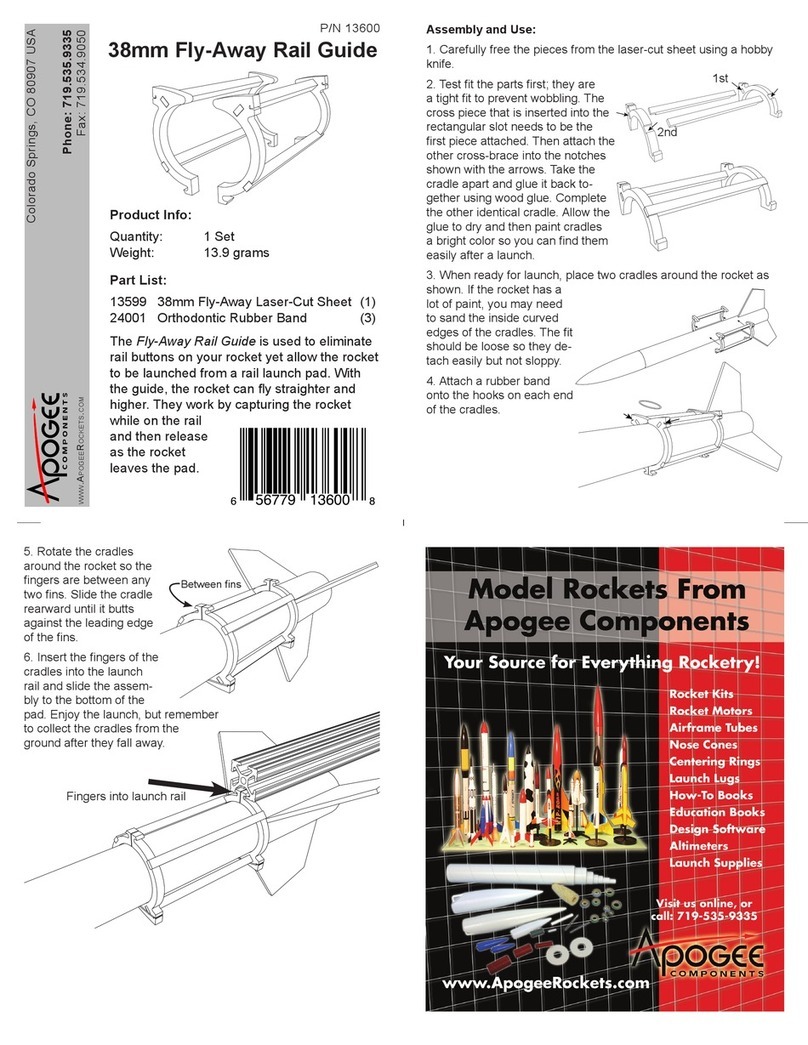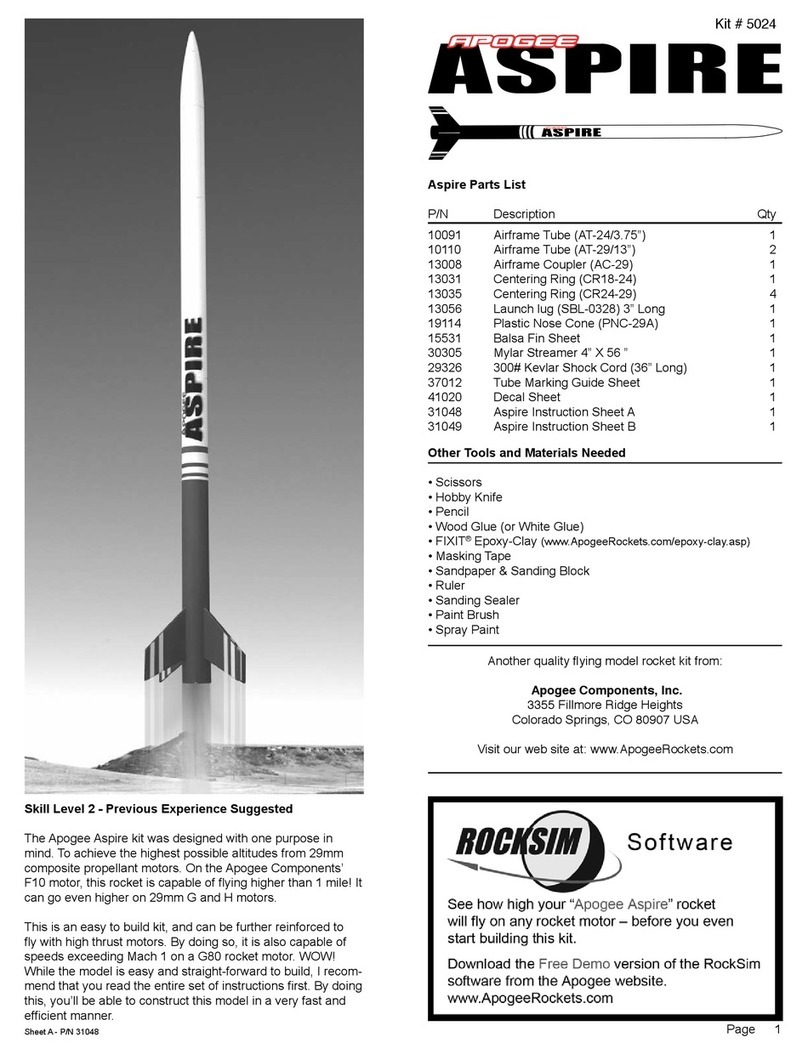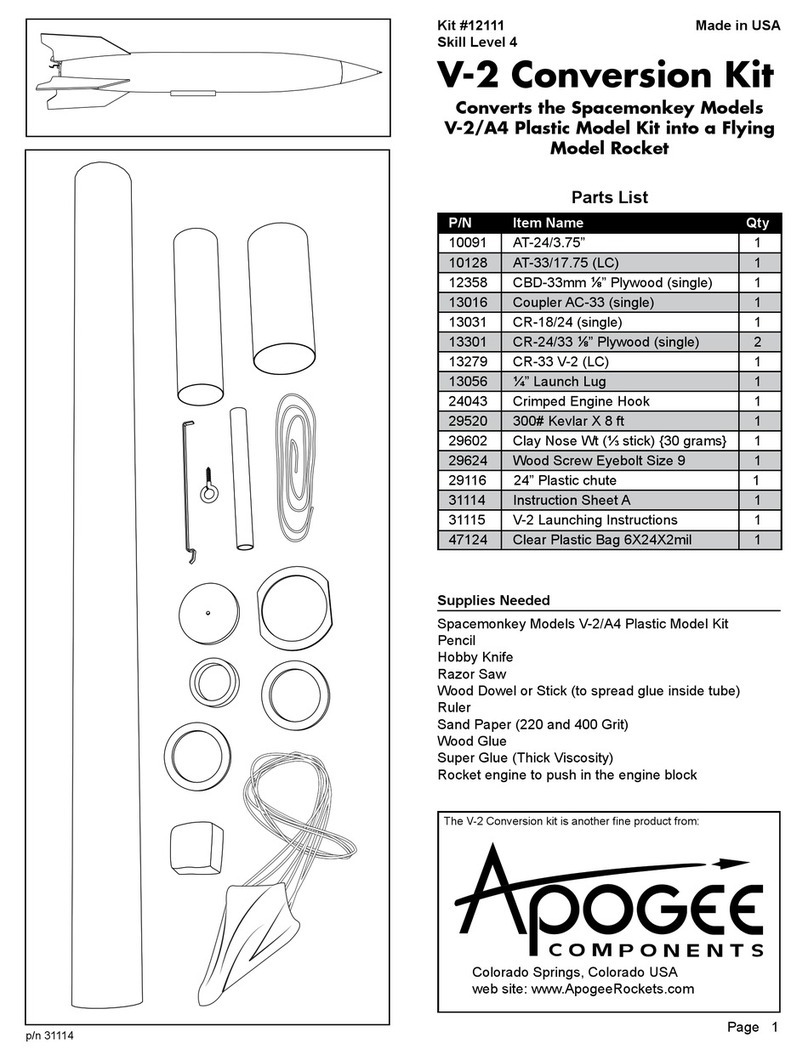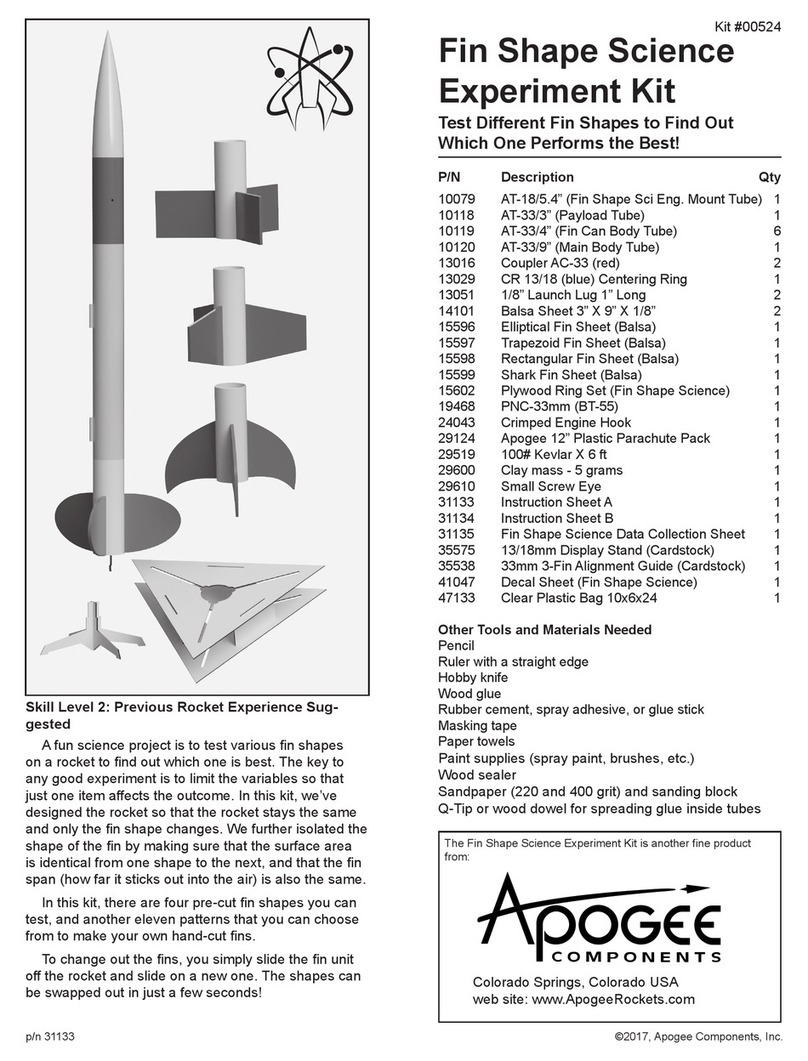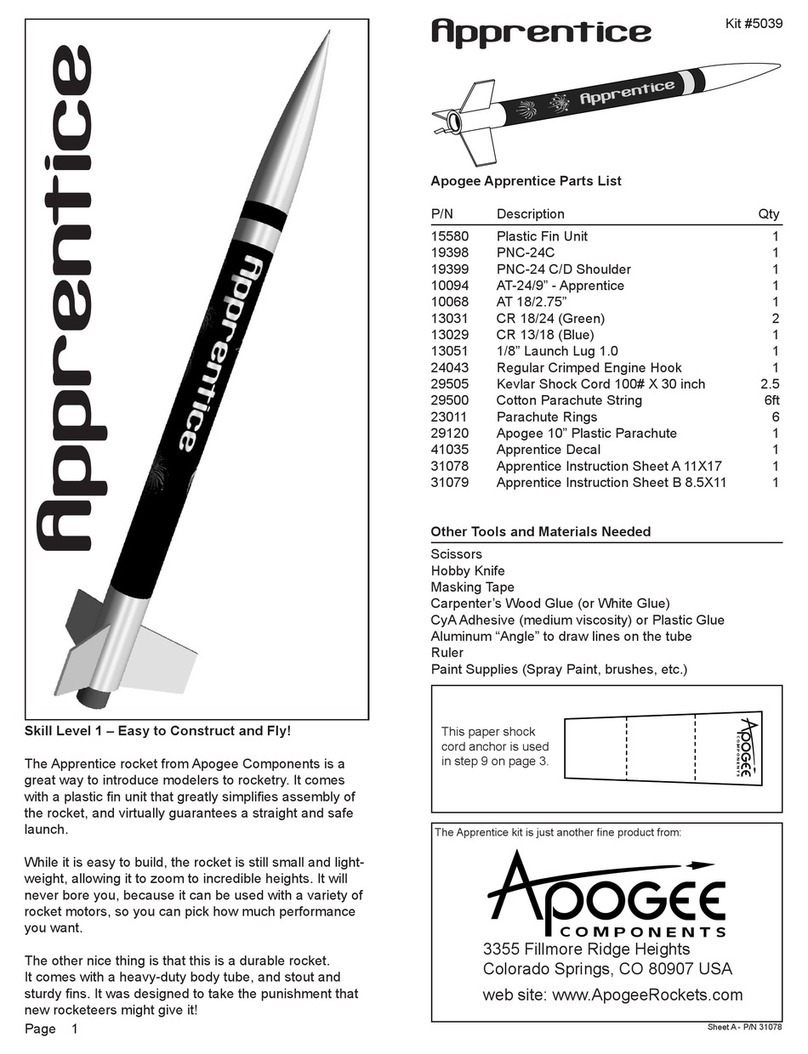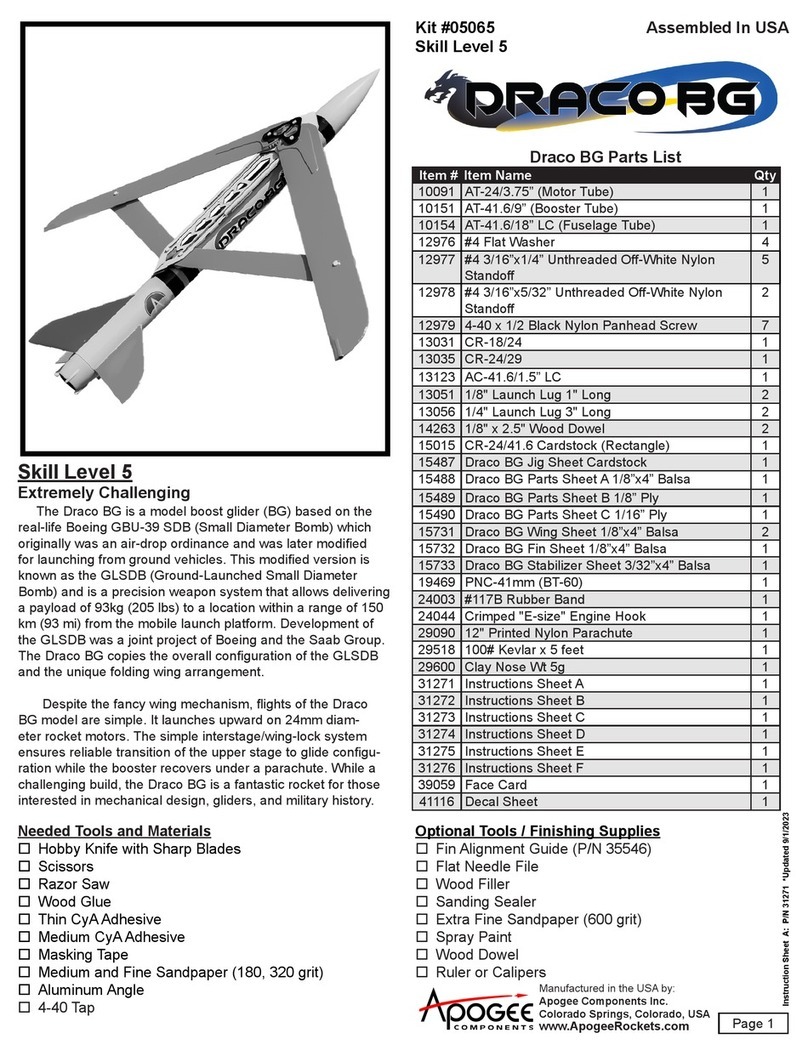
6. Take the blue ring and glue it inside the front end
of the tube using wood glue. You can use a rocket
engine to push it in until it butts against the metal en-
gine hook tang on the inside of the tube. Remove the
rocket engine casing immediately, and wipe away the
excess glue on both sides of the engine block. Allow
the glue time to dry.
7. Pass one end of the shock cord through the
remaining cardstock centering ring and tie the cord
around the engine mount tube. Cinch the cord tight
to the tube. Run a bead of wood glue around the for-
ward end of the engine mount tube nearest the front
end. Slip the ring onto the forward end of the motor
mount tube so that the ring aligns with the 2 ⅜ inch
(60.3mm) line on the tube as shown. Pull the cord so
that the loop is tight up against the side of the center-
ing ring.
8. Cut a small notch on the inside of the green cen-
tering ring. This notch will be for the shock cord to t
under the ring. Pass the loose end of the shock cord
through the green centering ring and glue the ring
over the front of the engine mount tube so that it butts
up against the large centering ring. This ring prevents
the shock cord from being pulled off the engine mount
tube at parachute ejection. Apply glue llets to both
sides of all of the centering rings and allow to dry.
9. Cut out the tube marking guide. Wrap it around the
large body tube, and rotate it around so the launch
lug line on the wrap aligns with the etched line on the
tube. Tape it so it doesn’t slide around. Mark the tube
where the ns will attach, then extend those lines
along the length of both tubes using an aluminum
angle. Be sure to notate the launch lug line.
10. Loop the long end of the yellow shock cord
through the engine tube so it is temporarily out of the
way. Using wood glue, glue the motor mount such
that the aft edge of the motor tube (not the center-
ing ring) is ush with the aft edge of the body tube.
Once inserted, thread the yellow shock cord back up
through the tubes and out the front.
Sheet B - P/N 31047
Step 9
Step 7
Step 10
Page 3
Step 6
Step 8
